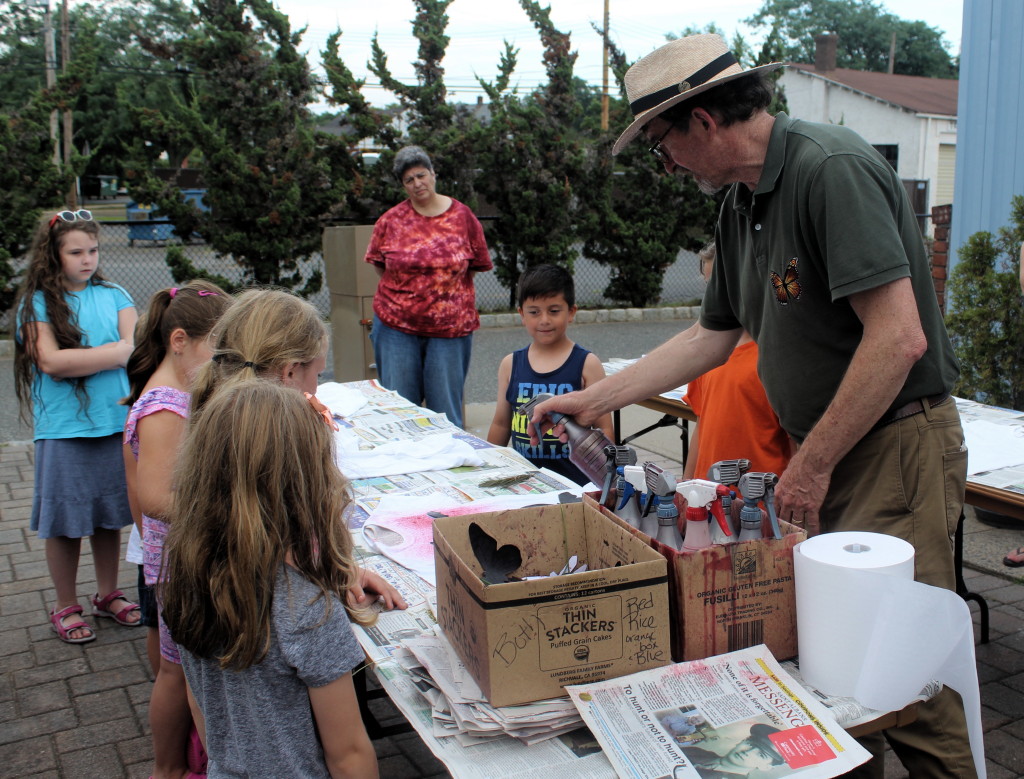SPOTSWOOD–Showcasing a slide with photos of butterflies, bees and other living creatures, a butterfly expert teaches residents about how to attract pollinators.
Jerry Schneider, an Ohio native who now lives in Vermont, visited the Spotswood Public Library on July 17 to share his expertise on pollinators.
“What do pollinators do? They are very important. … Pollinators as far as helping the flowers they will take pollen from one flower and they will take it to another and then if that happens those plants can get seeds or fruit,” Schneider said. “So if I am an apple tree and I have blossoms in the spring, I need those pollinators to come by to take pollen from one apple tree and bring it to my tree then it fertilizes my flowers and then I will get apples in the Fall.”
Schneider explained that the male part of a plant is called a stamen, which is made up of the anther and filament. The anther produces the pollen and pollinators or the wind will take the pollen and move it to another plant and/or tree, which fertilizes it.
“We would not have fruits [such as] strawberries, bananas, peaches, apples we would not have any of that if we did not have pollinators,” Schneider said.
Butterflies, the wind, bees, bats, moths and hummingbirds are different types of pollinators, according to Schneider.
With birds being the main predators for butterflies and moths, Schneider said that some butterflies and moths fly really fast to get away from predators, while others have camouflage wings to hide from predators. Some butterflies and moths also have designs on their wings that look scary and/or dangerous to drive away predators.
“Pollinators and insects in general their numbers are going down and we need pollinators,” Schneider said.
Some reasons why the population of pollinators and insects are going down, Schneider said is linked to people using pesticides their lawns, the development of buildings and other structures and pollution.
“We can create habitat so that they can get fed more. … If you have a field…and you don’t need to mow it best to do that in October because that’s when all the Monarch [butterflies] have gone south and the bees have gone into their hives and the birds have migrated through so they are not looking for caterpillars and moths to eat,” Schneider said.
Residents can help provide food for pollinators, Schneider said by building a pollinator garden, which many libraries, schools and other people have done.
To find the best flowers to plant in a pollinator garden, Schneider recommended that residents to go to plant nurseries and/or look around when they are out and notice what flowers pollinators land on. Residents can also read books such as “National Wildlife Federation: Attracting Birds, Butterflies and Other Backyard Wildlife” book.
Schneider reported that residents can also use the internet to search for what flowers to plant in their pollinator garden.
Flowers that residents can plant include dandelions, chives, red milkweeds, orange milkweeds, wild vetch, zinnias, verbena, goldenrod and asters.
Giving a slideshow presentation to showcase various pollinators, Schneider showed photos of bees, butterflies, bats, moths, a hummingbird, a dragonfly and a Preying Mantis.
After the presentation, residents got to purchase t-shirts and create pollinator tee shirts, using a combination of fabric dye sprays, plants, and butterfly, bat and dragonfly cutouts.
Contact Vashti Harris at [email protected].

